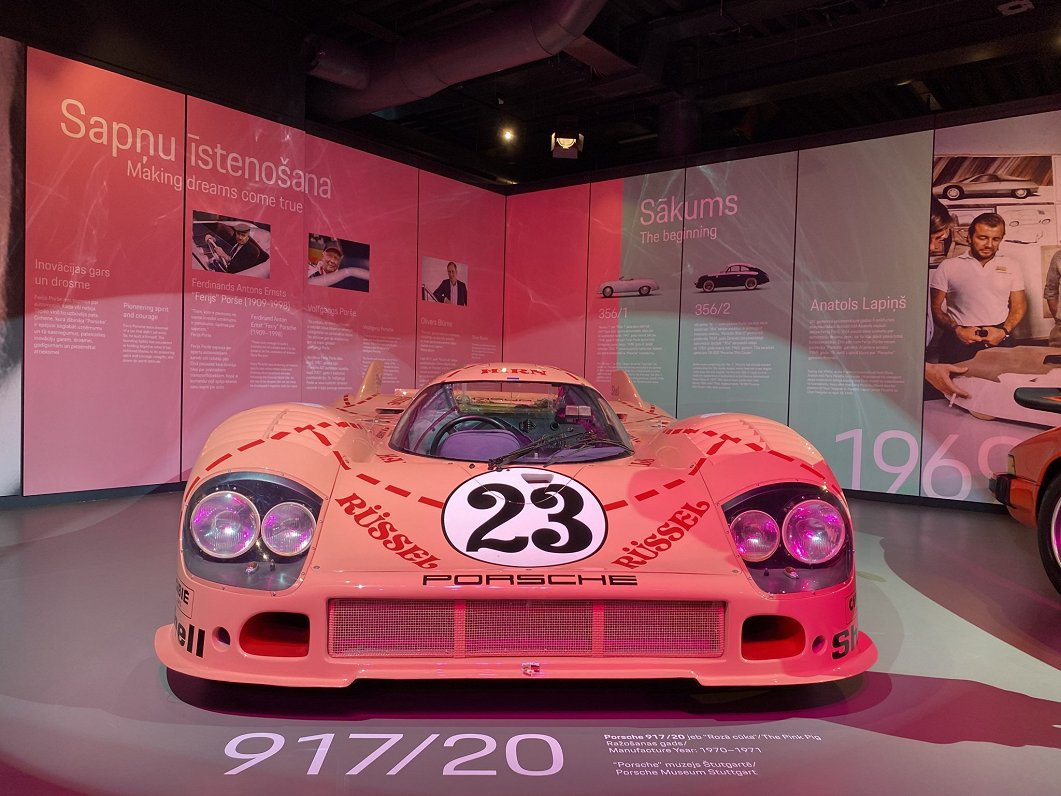Born Anatols Kārlis Lapiņš in Rīga, Lapine might not be a household name even among most car enthusiasts, but to those within the automotive design world he is a legend. Lapine had a hand in shaping some of the most impressive and iconic sports cars of all time. The hidden design champion from Latvia was one of so-far only four chief designers of Porsche and led the styling studio of the famous German car brand for almost two decades from 1969 to 1988. His handwriting can still be seen on many streets around the world – and now also in the Riga Motor Museum in a special exhibition named “The Latvian who made pigs fly“.
Lapine was appointed chief designer at Porsche in 1969 and is responsible for some of the sports car manufacturer's best-known models. Tasked back then with establishing a vision of Porsche beyond its core model, the 911, Lapine and his team were the minds behind iconic models such as the 924, the 944 and, most notably, the 928. Some of them were seen as controversial when they were introduced because of their challenging designs, but now they are considered classic cars and are shown in Rīga on loan from the Porsche Museum Stuttgart and private owners.
“We are telling not only about excellence and style but we are telling about our Latvian man, Anatols Lapiņš, who is very important in car construction history and left significant footprints in the car design,“ Aivars Aksenoks, head of the Road Traffic Safety Directorate (CSDD) that operates the museum, said at the opening of the exhibition that runs just a mere three weeks from 22 September to 15 October. “Latvians are very proud of our heroes, and Lapine is of course one of the most famous.“
Naming the exhibition a “super important“ event for Latvia and his company, Porsche Latvia CEO Ivars Norvelis echoed the assessment. “We are small country and we are cherishing everything that we can be proud worldwide. And this is obviously the biggest footprint of a Latvian ever made in the automotive industry, ” he told LSM, adding that Lapine, however, is “actually less known than we would like.” One aim of the exhibition is thus to inform people and especially the younger generations about the serial trendsetter and his world famous achievements.
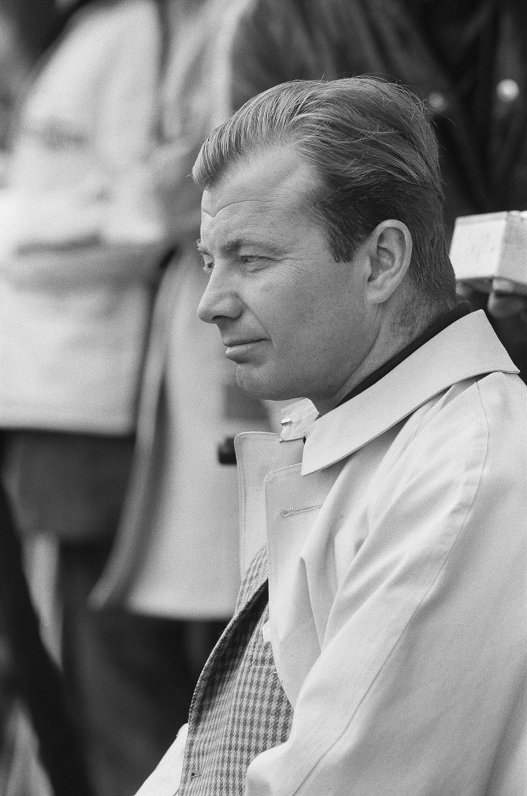
From Rīga to the auto capital of the world
Lapine carved a brilliant career in the world of automobiles that spans two continents and most of the second half of the twentieth century. Born 23 May 1930 in Rīga during the first Latvian independence period as a son of a half-German, half-Latvian father and a Polish mother, he spent his earliest years living in the Āgenskalns neighborhood, but later during the Second World War had to flee with his family to Poznan in German-occupied Poland.
Ending up in Hamburg after the war, Lapine started his journey in the automotive industry as motor mechanic intern at Daimler-Benz in Hamburg before attending the Hamburg Wagenbauschule, where he studied to become an engineer.
In 1951 his family relocated again and under the UN resettlement of refugees programme went to the USA, which proved to be the land of opportunities for the young Anatole who had been always fascinated by cars, especially their shape and design. He took on several occasional jobs to save up money to move to the then auto paradise, Detroit, where he headed to the General Motors (GM) offices to apply for a job.
"The first thing I did when I reached the shores of America was to buy decent clothes to find a job," Lapine once told the Latvian daily Diena. "I chose General Motors because I liked the cars they built, they impressed me much more than Chrysler or Ford."
By chance Lapine met GM’s chief designer in the elevator right on the day when he was scheduled to have the job interview – and he was hired right away as junior detailer in the advanced body engineering department. Lapine would stay for 14 years at the world's largest motor-vehicle manufacturer at the time. At GM he served as the studio engineer for the astonishing 1963 Corvette Stingray and became part a design studio that created a number of striking concept cars, most of which had a strong sporting note. The wartime refugee from Latvia also found his private happiness at work: In 1957 he married GM designer Jeanette Lea Krebs with whom he went on to have 3 children.
In 1965, Lapine was dispatched to GM’s German subsidiary Opel to add some more vigour and appeal to their rather staid cars and provide it with a new, more dynamic image. Overseeing the Research Centre at Rüsselheim, he developed such models as the Kadett and Commodore and contributed to the final shape of the Opel GT. In a secret project he also turned the humble Opel Rekord into a racing car that became known as the ‘Black Widow’ and famously had a ‘taxi’ sign affixed to its roof. Its engine had double the power of the engine for the vehicle’s basic version and in 1968 left its competitors behind in the closing race of the season at the Hockenheim ring.
Poached by Porsche
Soon Lapine was hired by Ferry Porsche (1909-1998, son of company founder Ferdinand) to work for the new Porsche Development Centre in Weissach outside of Stuttgart where vehicles are developed, tested and prepared for series production to this day. Having already settled in Germany, he did not need think long to make his decision since he had long admired the company – and already in the US drove a Porsche 356, even though he was working for GM.
Lapine’s arrival at Porsche on 15 April 1969 came at a challenging time, when the premium sports car maker was at the crossroads with its iconic 911– the brand's signature model that built Porsche's success and is probably Germany's best known sports car to this very day. A wind of change was blowing at the company also from another direction: Both the Porsche and Piëch families were withdrawing from business operations and their active management posts in a move that saw Porsche some years later going public and becoming a joint stock company.
Stepping into the big footsteps of Ferdinand Alexander Porsche (1935-2012) – the eldest son of Ferry Porsche – as chef designer, one of Lapine's first major projects was a redesign of the original 911 to bring it in line with new mounting safety regulations. Modernising the sleek, racy and well-established 911 was one thing, but he had also to work on broadening the model range and a new design language for Porsche beyond the classic shape of its core model from which design cues are taken even still today. This redefinition coincided with the development and introduction of a drive system component known as transaxle construction where the engine is in the front and the transmission at the rear.
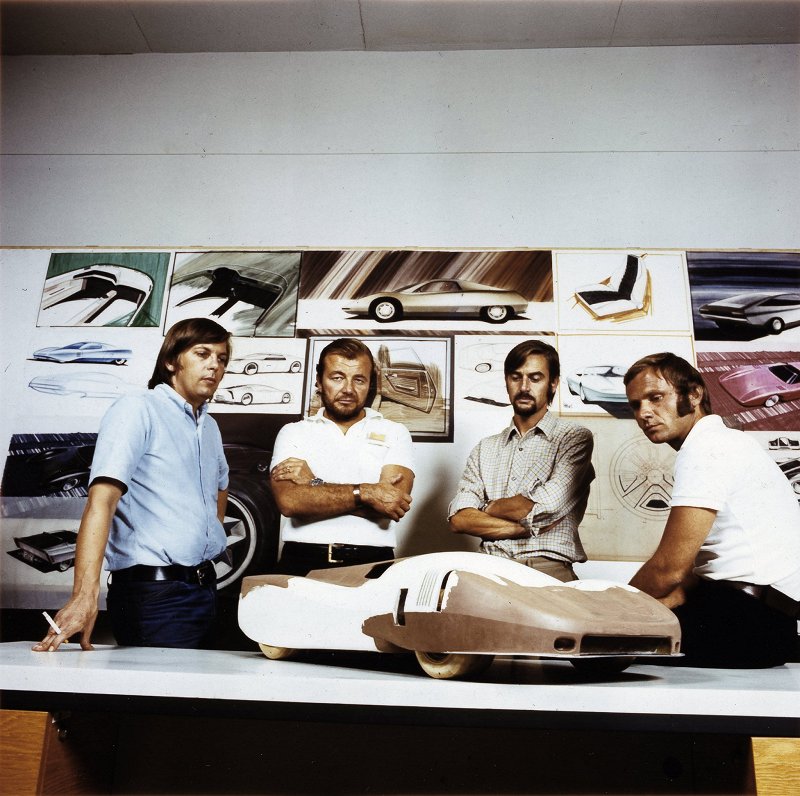
Positioned above and below the 911 in the model line-up’s hierarchy, Lapine led the design of two new models: the 924 and the 928. Both were technological art works with an avant-garde design and something different right from the start – until today they are widely considered two of the most progressive models that were ever produced by Porsche and contributed highly to the company's image of elegance, style and quality. In both cases, the principal designer of the car was someone else, but Lapine oversaw and guided their development. This has not always been a simple task since it took a while for the Porsche management to come around to their bold looks. Internally they were seen provocative and encountered reservations, but externally proved to be considered style icons.
“Lapine was someone who was able to gather the best people together and to help them to bring their best on the paper and on the street,” explained Frank Jung, head of the Porsche corporate archive, to LSM, adding that the Latvian-born designer used to say that he does not draw the sketches himself because he never wanted to compete with his employees but rather get the best out of them.
“Design is teamwork and he actually really was a team player, ” Jung underlined and revealed also some technical aspects of the designer’s working habits. “Lapine loved to work with models, with clay models. They allowed him to change and to rearrange new designs in that scale.“
Legendary legacy
Under Lapine’s leadership also the 924 successor models 944 and the 968, the 964 generation, the 959 supercar and the 911 G-Series were created. All of these models showcased distinctive design features and innovations while maintaining a family resemblance to make them recognizable as Porsches. The most outstanding model and most closely associated with Lapine, however, is the 928 that was way ahead of its time compared with anything else out there. It forms Lapine’s legacy, who had the courage to think differently and argued that a car that was immediately likeable would not age well. One of his maxims was: “Conventional cars look boring after a while!”
The ultimate proof is the 928. If nothing else, the car was distinctive. When it debuted in 1977, it looked like nothing Porsche had ever done before – both from a styling and an engineering perspective. The shape and prominent design features of the car were not only charismatic and modern, but also timeless and ground-breaking. Even today the car does not look overly kitschy or particularly out-dated, as do so many other contemporaries from the 1970s. Critically acclaimed and awarded as the “European Car of the Year” in 1978 – as the first and so far only sports car – yet generally still not fully appreciated by Porsche purists, the 928 was a hallmark in design and technology with many of its innovations still in use today – almost 30 years after its production ended in 1995.
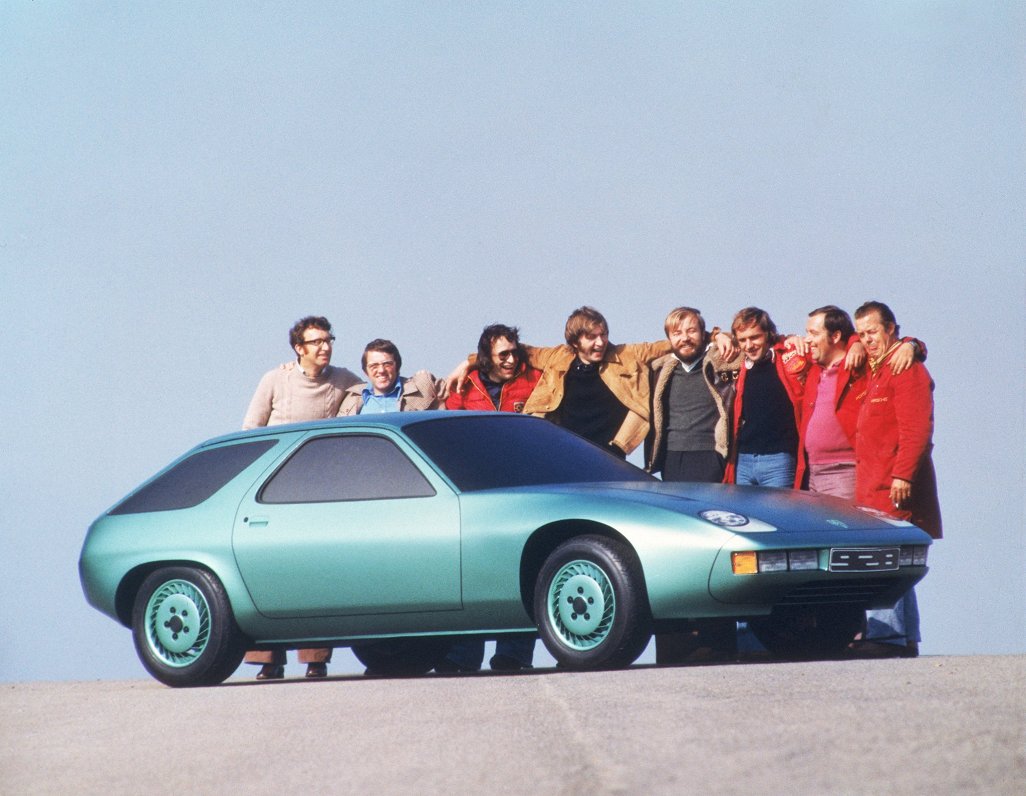
In addition to overseeing the styling of Porsche models, Lapine and his team helped further the scope of Porsche Design with numerous third-party design projects. Among the most notable projects are the redesign of cockpit layouts for commercial Airbus aircraft and the design of new generation of Linde forklift trucks. “We worked at Airbus for two years. Other companies also approached us. Our policy was to work with those with a good reputation, ” Lapine once remembered.
When marrying style and engineering, Lapine always kept true to his approach to design. He firmly believed that form should follow function and was committed to both innovation and practicability – even though Porsche cars are probably more entertainment than transportation. “As a designer he did not follow fashion but was forever setting new trends with his concepts,” Porsche’s current chief designer Michael Mauer paid homage to his pre-predecessor in an obituary after Lapine’s death in 2012.
Lapine’s ability to combine tradition with cutting edge technology contributed to Porsche’s once seemingly endless string of production successes. This resulted in a decade’s worth of vital turnover for the German carmaker that experienced a boom in the 1980s and still is one of the most valuable automotive brands in the world.
Say oink to the "Pink Pig“
Being a sports car manufacturer from the very outset, Porsche is inextricably linked with motorsport and has used the racing circuit to develop and improve its cars. In 1970 it achieved a long-held ambition when it secured its first-ever of many victories at the 24-hour Le Mans race. Footage of the race was also later taken for the movie Le Mans starring Hollywood star Steve McQueen in a blue and orange Porsche 917.
In the very same year the new chief designer at Porsche left his first artistic mark in motorsport. Lapine designed the long-tail Porsche 917 driven by Gérard Larrousse and Willi Kauhsen that came second in Le Mans – it had a psychedelic livery created by green and purple waves on it that were painted with around 1,500 spray cans. Right after Woodstock it was quickly given the nickname 'Hippie' and made waves both in the motor racing scene and parts of the Porsche executive floor. Legend has it that Lapine was inspired to this highly original design by the dress of a secretary.
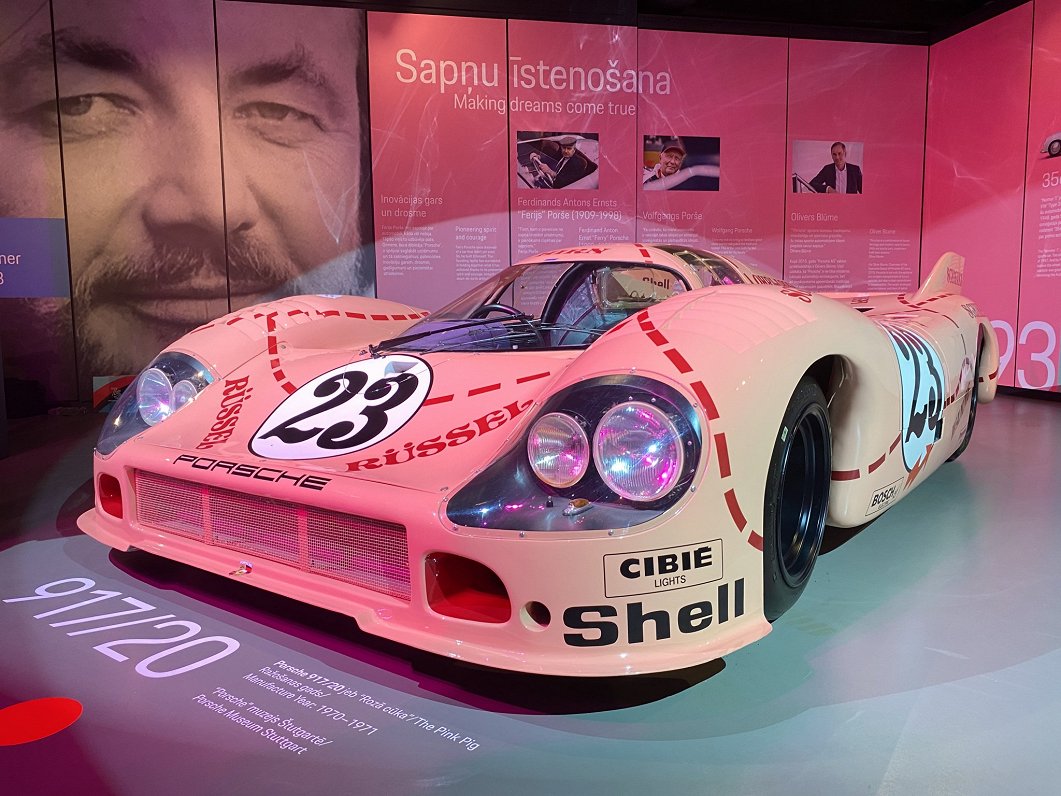
Another car that received an extravagant painting scheme from Lapine and caused an even bigger sensation was the 917/20 that competed the following year at Le Mans 1971 with overhauled bodywork with larger radius curves. Reacting to sarcastic remarks about the car’s porcine look and shape, Porsche decided to go for unique one-off paintwork. Choosing fleshy pink as basecoat colour for the sport racer, Lapine and his team sketched a schematic butcher chart with separating red lines on it and labelled the vehicle’s parts according to the best cuts of meat: snout, ham, pork knuckle and brain.
The idea let a ‘pig’ run was born when Lapine saw the sweeping car for the first time. Even though the meaty vehicle failed to perform in sporting terms and had only a short run on track after succumbing to an accident, its design was an instant hit for motorsport fans and car enthusiasts all over the world. Endearing nicknames such as “truffle hunter from Zuffenhausen” were quick to appear, but ultimately the name “Pink Pig” prevailed. It is one of the most famous Porsche cars and said to be the most photographed Le Mans race car ever.
“The flying pig is so a big joke at such a serious level of motorsport. It is not possible at this time now where marketing is king – you can not make jokes like this on a car anymore that drives 300 km and more per hour, ” Latvian car journalist Pauls Timrots told LSM full of appreciation for the work of the Latvian Porsche chief designer, describing it as “a very good point” in motorsport history. “It is a very big joke about a pig and Porsche. And about Germans maybe who have lot of sausages and all this stuff. I like this joke.”
“From the historical point of view, it was one of the most unsuccessful cars we ever built,“ Porsche’s head archivist Frank Jung said about the 917/20 that participated in just one race and without its livery would most likely have been long forgotten. “But it still is by far the most iconic design we have. We are selling more merchandise stuff with this design that you ever can imagine,“ he added, before lifting his trouser leg and showing off his “Pink Pig” socks next to the car that is now the main exposition model on display at the special exhibition in the Rīga Motor Museum.
From Stuttgart back to Riga
Jung had already showcased his particular passion and fondness for Lapine’s designs, when starting off his presentation at the exhibition opening event with a childhood picture that showed himself as young boy standing between two Porsche 928s. “I'm driven by his dreams as well,“ the German archivist said with a smile, adding that it is a great honour and pleasure for him to be in Rīga. “We know that here is a very high local identification with Lapine.”
The big enthusiasm for the Latvian-born designer was also one of the main reasons why Porsche agreed to borrow several cars despite having only recently opened a special exhibition in its own museum in Stuttgart-Zuffenhausen to mark its 75th anniversary. “It is really the best thing that, just as Lapine himself once came from Rīga to Stuttgart, we can now bring something back from Stuttgart to Rīga and work together, “ Jung said. “And there are few better options than something like this.”
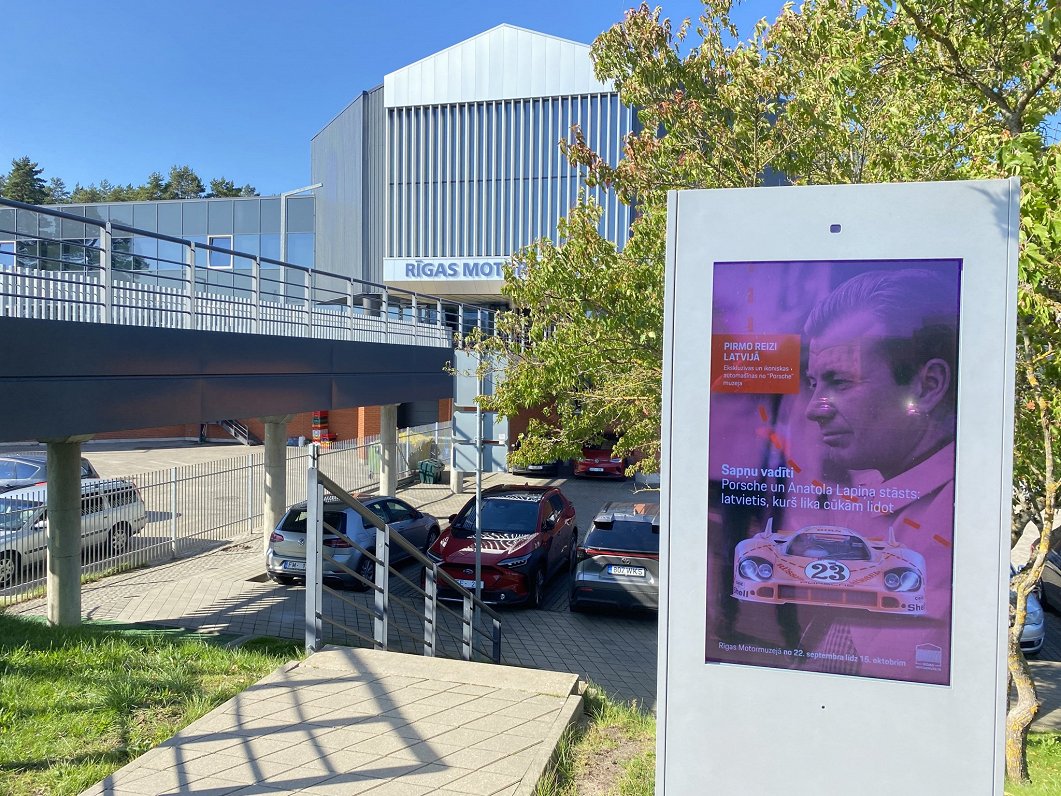
Unlike the car models designed under his aegis, Lapine never returned to Latvia before he died on 29 April 2012 aged 81 in Baden-Baden in south-western Germany. In an interview he once admitted to be afraid to come back to his home country since he wanted Latvia to remain in his memory the way he remembers – as the beautiful land in which he spent his happy childhood. "Latvia will remain an indelible memory, “Lapine told the Diena newspaper in 1999.
The same could be said about Lapine's meaning for Porsche, which he left in 1988 after having suffered a heart attack that prompted his departure.
“When you have been a designer for almost 20 years at a company or brand that is celebrating its 75th anniversary this year, then you can see how important that is,“ Jung told LSM. “It is definitely certain that without him things would look differently – in the truest meaning of the word.”
The exhibition continues at Rīga Motor Museum until October 15. Details: http://motormuseum.com/
